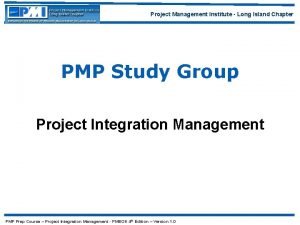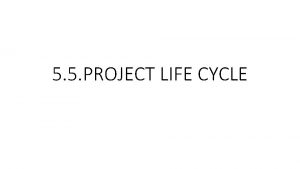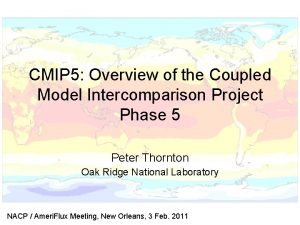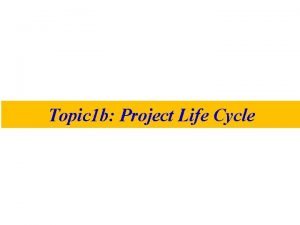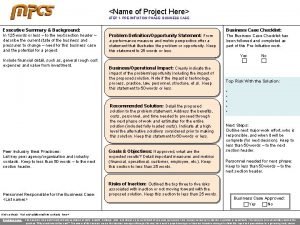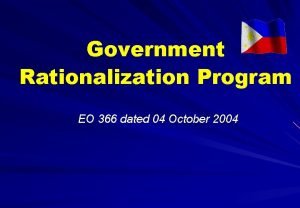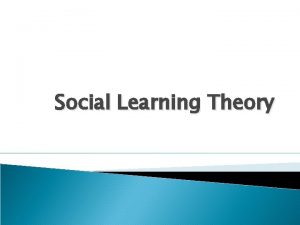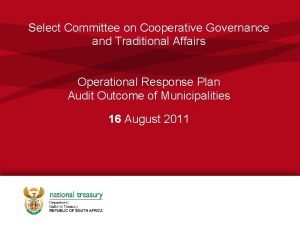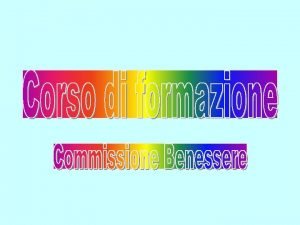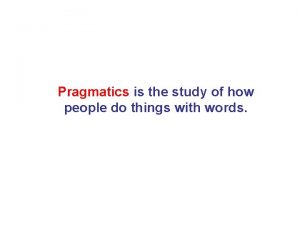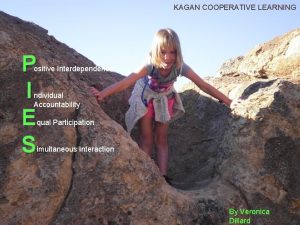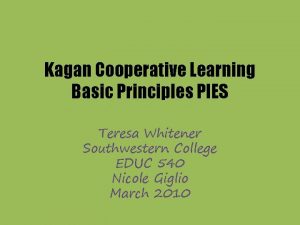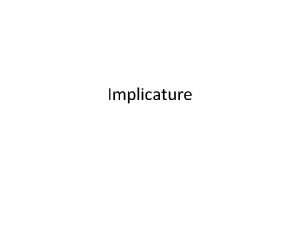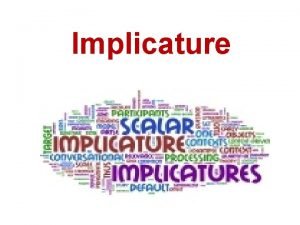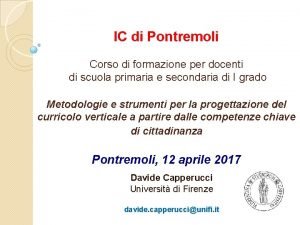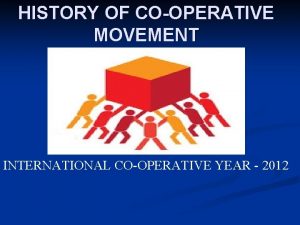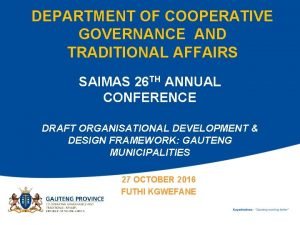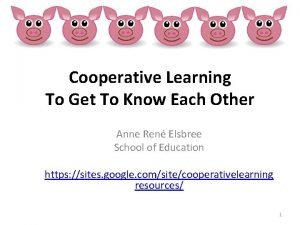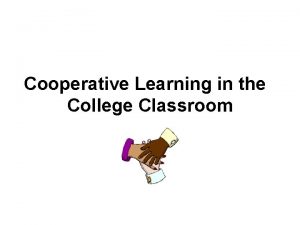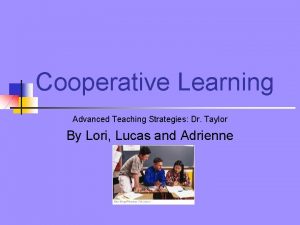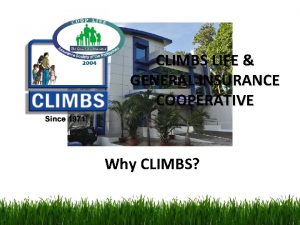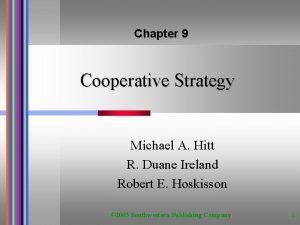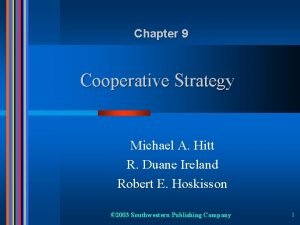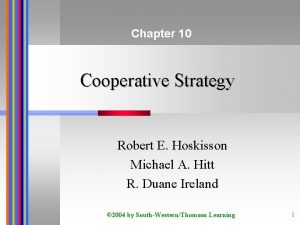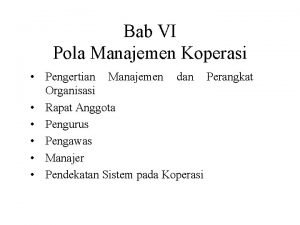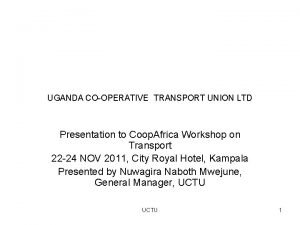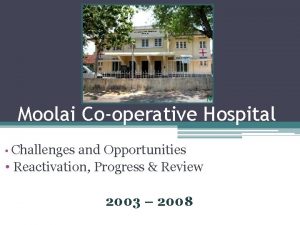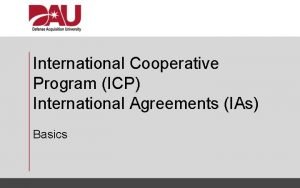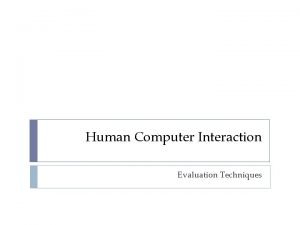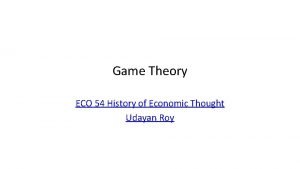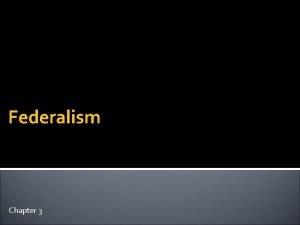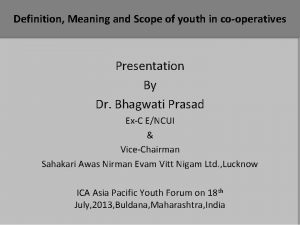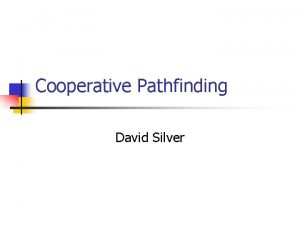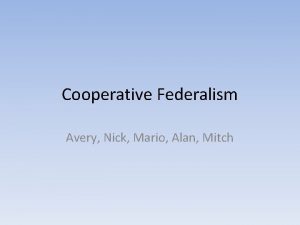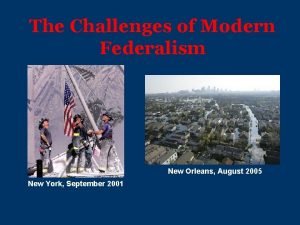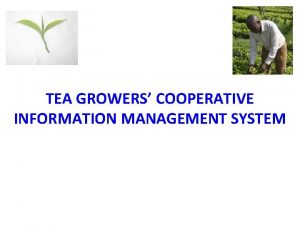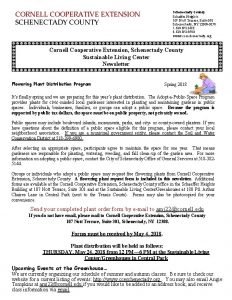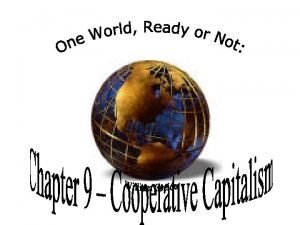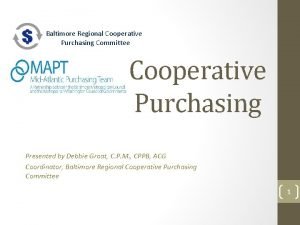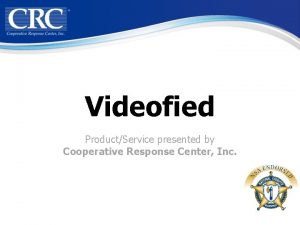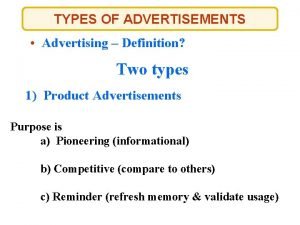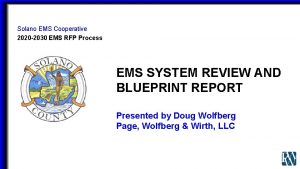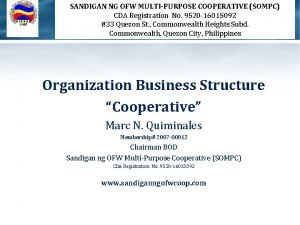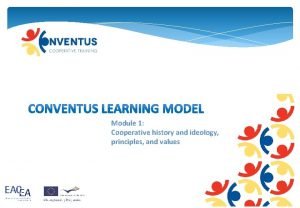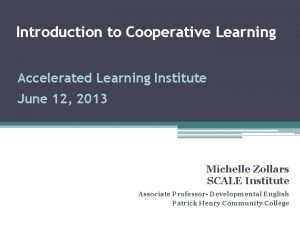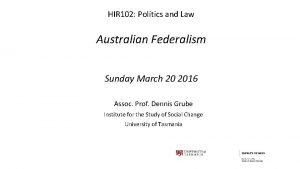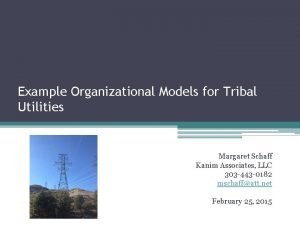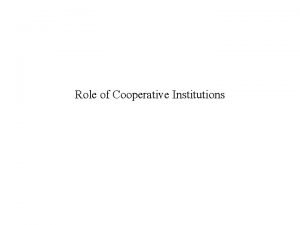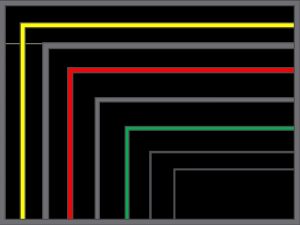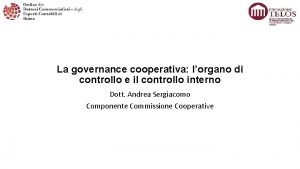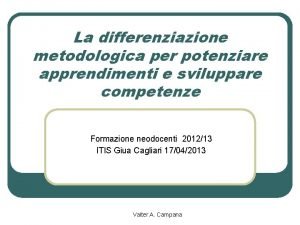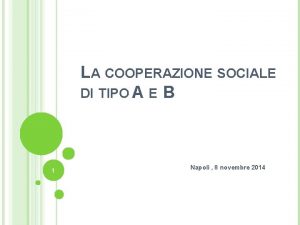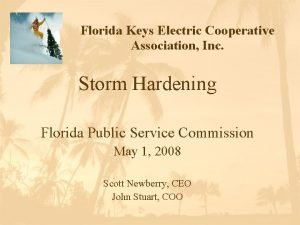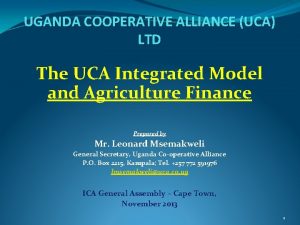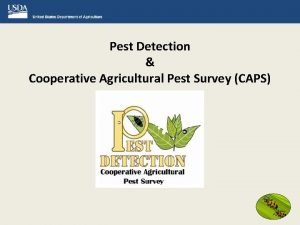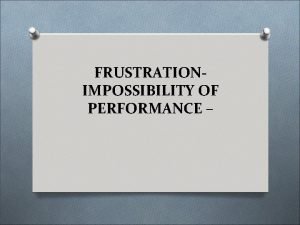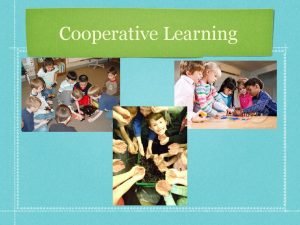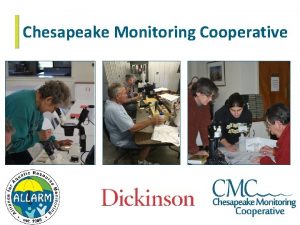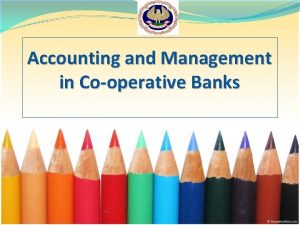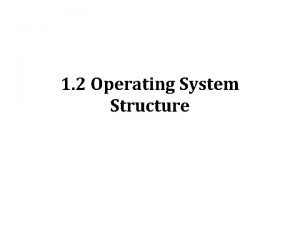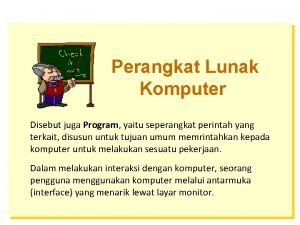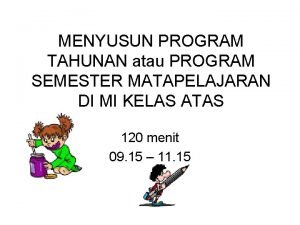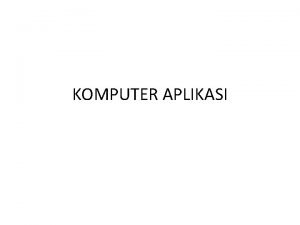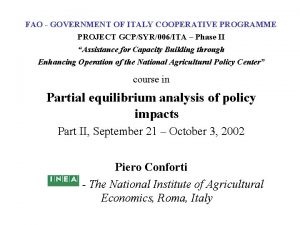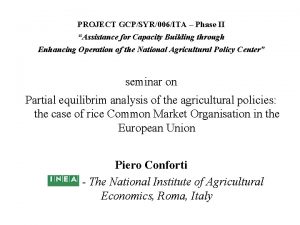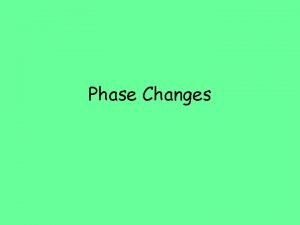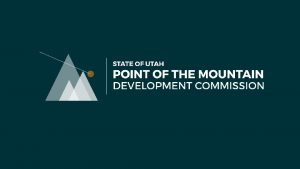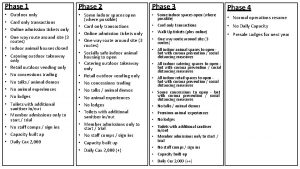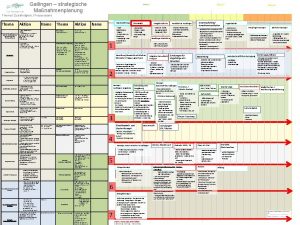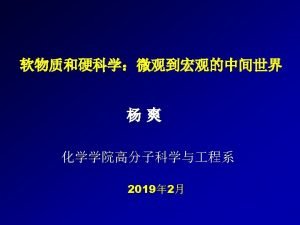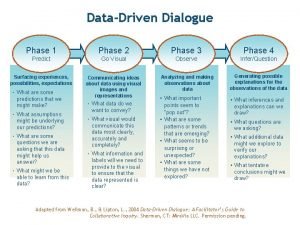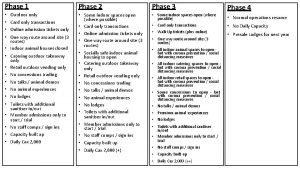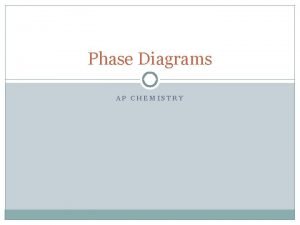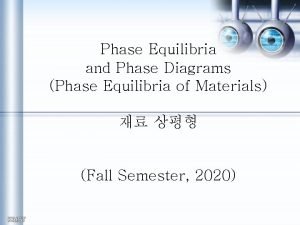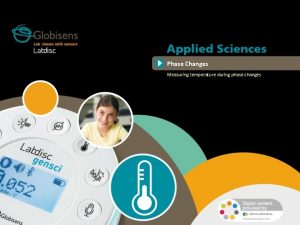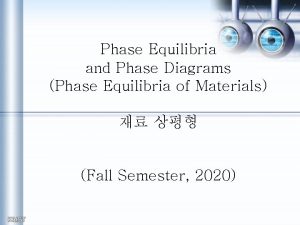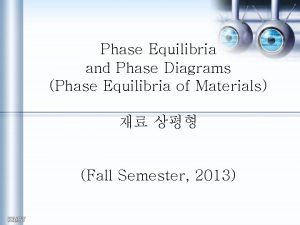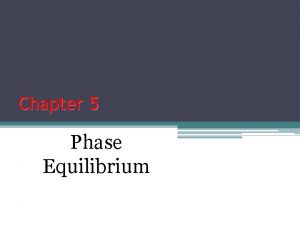Project GCPSYR006ITA Phase II FAOITALIAN GOVERNMENT COOPERATIVE PROGRAM


















































































































































- Slides: 146

Project GCP/SYR/006/ITA – Phase II FAO-ITALIAN GOVERNMENT COOPERATIVE PROGRAM Environmental Economics and Sustainable Development Donato Romano Department of Agricultural and Land Economics University of Florence and International Consultant to the FAO 1

Objective: sustainability of rural development policies relevant concepts and methods Background: Basic microeconomics Materials: outline and reading list: contents. schedule and references course notes 2

Evaluation: homeworks quizzes: 1 per week final test: Wed. Nov 27 th Time 9. 30 -10. 15 10. 15 -11. 10 11. 10 -11. 55 11. 55 -12. 40 12. 40 -13. 25 Sat G 1 G 1 G 2 G 2 G 1 G 2 Sun G 2 G 1 Seminar G 2 G 2 G 1 G 1 Mon G 1 G 1 G 2 G 2 G 1 G 2 Tue Wed G 2 G 2 G 1 G 1 G 2 G 1 Thu G 1 G 1 G 2 G 2 Test Field visit W 1 W 2 W 3 Schedule: Week G 1 G 2 3 G 2

Population • Every year. more than 93 million people are being added to the world’s population of 6 billion • More than 82 million of these additional people per year will be born in Third World countries • Rapid population growth can have serious consequences for the well-being of humanity worldwide 4

Population historical records Table 1. 1. Estimated World Population Growth through History Estimated Annual Increase in the Intervening Period Year Estimated Population (Million) 10. 000 B. C 5 A. D. 1 250 0. 04 1650 545 0. 04 1750 728 0. 29 1800 906 0. 45 1850 1. 171 0. 53 1900 1. 608 0. 65 1950 2. 576 0. 91 1970 3. 698 2. 09 1980 4. 448 1. 76 1990 5. 292 1. 73 2000 6. 057 1. 70 5

Population historical records 6

Population historical records Table 1. 2. World Population Growth Rates and Doubling Times: A Historical Review Period Approximate growth rate (percent) Doubling time (years) Until 1650 0. 002 35. 000 1650 -1750 0. 3 240 1850 -1900 0. 6 115 1930 -1950 1. 0 70 1960 -1980 2. 3 31 mid 1990 1. 7 43 7

Population geographic distribution 8

Population geographic distribution Annual population growth rate (%) 3. 0 LICs excl. China & India 2. 5 LMICs 2. 0 LICs 1. 5 1. 0 HICs 0. 5 0. 0 1965 1970 1975 1980 Years 1985 1990 1995 9

Population age structure Table 1. 3. Dependency Ratios in Selected World Regions 1960 1970 1980 1990 2000 World 0. 739 0. 765 0. 711 0. 642 0. 605 High income 0. 590 0. 578 0. 526 0. 491 Middle income 0. 755 0. 777 0. 711 0. 656 0. 582 Low & middle income 0. 779 0. 811 0. 750 0. 670 0. 626 Low income 0. 791 0. 826 0. 768 0. 675 0. 644 Low income. excluding China and India 0. 834 0. 905 0. 900 0. 857 0. 804 East Asia & Pacific 0. 788 0. 813 0. 706 0. 546 0. 509 Europe & Central Asia 0. 603 0. 599 0. 561 0. 550 0. 508 Latin America & Caribbean 0. 867 0. 882 0. 794 0. 691 0. 607 Middle East & North Africa 0. 899 0. 963 0. 910 0. 861 0. 729 South Asia 0. 781 0. 822 0. 781 0. 730 0. 681 Sub-Saharan Africa 0. 867 0. 912 0. 938 0. 937 0. 905 10

The hidden momentum 2150 Year two-child family achieved 2035 Year ultimate fertility achieved 2150 2025 2040 2150 2005 11

The demographic transition (in W. Europe) per 1, 000 40 birth rate 30 20 death rate growth rate 10 0 Stage II 1840 -50 1890 1910 Stage III Stage IV 1990 time 12

The demographic transition (in LDCs) per 1, 000 B 40 birth rate 30 A 20 B death rate A 10 0 1900 Stage II 1950 1965 -70 Stage III time 13

Goods consumed by parents (Gp) The microeconomic theory of fertility C A' G 3 A G 4 G 2 G 1 E 3 E 4 E 2 I 4 E 1 I 2 I 3 I 1 F 3 F 2 B" F 4 D B Number of desired children (Cd) B' 14

The microeconomic theory of fertility Policy implications: • an increase in the education of women and a consequent change in their role and status, • an increase in female non-agricultural wage employment opportunities, which raises the price or cost of their traditional child-rearing activities, • a rise in family income levels through the increased direct employment and earnings of a husband wife or through the redistribution of income and assets from rich to poor, • a reduction in infant mortality through expanded public health programs and better nutritional status for both parent and child, • the development of old-age and other social security systems outside the extended family network to lessen the economic dependence of parents on their offspring. 15

Population-Environment-Poverty Links Other factors Population growth Fixed resources Technology Cropland Urban Frontier resources Forest Range Farm size Overcrowding Fuel wood Overgrazing falls occurs declines occurs Agr. productivity falls + - Forest Range Cropland Colonization brings land degradation Prices Land conflicts may rise occurs - Poverty - Other factors 16

Carrying capacity Table 1. 4. Carrying Capacity in 2000, by Region Africa Southwe st Asia South America Central America Southeas t Asia Average Low 1. 6 0. 7 3. 5 1. 4 1. 3 1. 6 Interim 5. 8 0. 9 13. 3 2. 6 2. 3 4. 2 High 16. 5 1. 2 31. 5 6. 0 3. 3 9. 3 Input level 17

Carrying capacity Table 1. 5. Carrying Capacity in Sahelian and Sudanian Zones of West Africa Zone Sustainable population Actual Per crops Per fuelwood Per livestock Per total rural population total population Saharan . . 0. 3 Sahelo-Saharan . . 0. 3 2 2 Sahelian 5 1 2 7 7 7 Sahelo-Sudanian 10 10 5 15 20 23 Sudanian 15 20 7 22 17 21 Sudano-Guinean 25 20 10 35 9 10 18

Population pressure and technological change Table 1. 7. Population Density and Farming Intensity, by Farming System Farming intensity Population density Hunter/gatherer 0 0 -4 Unknown Forest fallow 0 -10 0 -4 Humid Bush fallow 10 -40 4 -64 Humid or semi-humid Short fallow 40 -80 16 -64 Semi-humid, high altitude semi-arid, Annual cropping 80 -120 64 -256 Semi-humid, high altitude semi-arid, Climate 19

Greenhouse effect 20

Greenhouse effect Why should this greenhouse effect be thought of as a problem? The additional warming is what causes concern: • many potentially damaging effects • some beneficial ones The gases producing this layer around the earth are: • water vapor, • carbon dioxide (CO 2), • methane (CH 4), • nitrous oxide (NO), • some chlorofluorocarbons (CFCs), and • ozone (O 3) 21

Greenhouse effect These gases are a mix of natural events and anthropogenic factors determining the relative contributions of these gases is complex Table 2. 1. Contributions of Greenhouse Gases to Global Warming Carbon dioxide 1990 emissions Percentage share Type of gas equivalence (millions of tons) over 100 years Carbon dioxide 1 26, 000 66. 0 Methane 21 300 16. 5 Nitrous oxide 290 6 4. 5 12. 0 CFC-11 3, 500 0. 3 n. a. CFC-12 7, 300 0. 4 n. a. HCF-22 1, 500 0. 1 0. 4 n. a. 0. 6 CFCs Other 22

Greenhouse effect Two features: • uncertainty • commitment to some degree of warming. Two policy responses: • prevention (to reduce trace gas emissions) • adaptation 23

Greenhouse effect Projected scenarios (IPCC estimates): • scenario A - business as usual: no controls are exercised over current rates of emission growth global mean temperatures will increase 1°C by 2025 and 3°C by 2100 compared with temperatures in 1990, i. e. a rise of 0. 3°C per decade • scenario B: deforestation is halted, natural gas is substituted for coal, which has a higher carbon content, and energy conservation measures are adopted a rise of 0. 2°C per decade • scenario C: increasingly strict abatement measures are undertaken, and energy from fossil fuels is aggressively replaced by renewable energy warming is held to 0. 1°C, 24

Greenhouse effect Table 2. 2. Possible Change in Climate, by Region and Season (scenario A) Region and Latitude Temperature change as a multiple of global average Rainfall Summer Winter Arctic and Antarctic areas (60°-90°) 0. 5 -0. 7 2. 0 -2. 4 Enhanced in winter Major food-growing regions of North America and Europe (30°-60°) 0. 8 -1. 0 1. 2 -1. 4 Possibly reduced in summer 0. 9 -1. 7 Enhanced in places that have heavy rains today Much of developing world (0°-30°) 0. 9 -1. 7 25

Effects of global warming Projected scenarios (IPCC estimates): • Rise in regional temperature: mid-latitude regions – summer soil moisture may be reduced, and crops could be affected by summer droughts; – reduction of water supplies, both of surface water and groundwater aquifers – changes in hydrological regimes • Rise in sea level: melting mid- and high-latitude small glaciers and ice sheets mean rise in sea level of 6 cm a decade – loss of low-lying land to the sea – salt intrusion to freshwater systems and groundwater – storm surges that cause floods • Frequent and severe events: alteration of the frequency and variability of events related to the weather 26 – droughts, storms, and floods may be more frequent and severe

Effects on LDCs • LDCs more dependent than DCs on NR more sensitive to changes in climate • the agricultural systems of many LDCs are based on low-lying deltaic land flooding and saltwater intrusion • many agricultural systems rely on natural rainfall rather than irrigation systems problems with changes in rainfall patterns • many small LDCs are island communities at special risk from severe weather events such as hurricanes and cyclones • the very poverty of many LDCs will preclude them from undertaking the adaptive policies, such as sea defenses, that may be needed 27

Ozone layer depletion Stratospheric ozone blocks ultraviolet radiation from the sun depletion of the ozone layer increases the incoming UVR: • increase of skin cancers • suppressions of the immune system in the human body • eye disorders • reduced or distorted growth in plants Cause (mid 1970 s): chlorofluorocarbons (CFCs) • depletion of the ozone layer • contribute to global warming 1989: Montreal Protocol 28

Loss of Biodiversity is the totality of genes, species, and ecosystems. The term is helpful for reminding us that it is not just the total stock of living things that matters, but the range of different living things. Protecting the world’s biodiversity is a difficult task: • 30 -50 million species • only 1. 43 million species have been scientifically described • most undescribed species inhabit the tropical forests • rate of loss of species is not known, but evidence suggests that the rate of extinction has increased • perhaps one-quarter of existing species are at risk of extinction in 29 the next twenty to thirty years

Loss of Biodiversity Table 2. 3. Status of Threatened Species Extinct Endangered Vulnerable Rare Indeterminate Total 2 9 9 20 10 50 Birds 113 111 67 122 624 1, 037 Fish 23 81 135 83 21 343 Invertebrates 98 221 234 188 614 1, 355 Mammals 83 172 141 37 64 497 Plants 384 3, 324 3, 022 6, 749 5, 598 19, 078 Reptiles 21 37 39 41 32 Amphibians 30 170

Loss of Biodiversity Causes of biodiversity loss: • population growth, • ill-defined land resource rights, • market, planning, and government failures If the above factors explain habitat loss, • their reversal or containment will assist the conservation process, but • in order to avoid to alienate people, it is required community involvement in protected areas 31

The Mediterranean Basin Why the Mediterranean Sea is subject of environmental concern? • land-locked • surrounded by countries with various combinations of – rapid population growth, – industrialization, – development, – massive changes in land use Two kinds of problems (Box 3. 1): • common problems, i. e. they are shared by two or more countries • problems occuring separately in several countries 32

The Mediterranean Basin Both types of problems are reciprocal externalities that require bilateral or collective action Examples: • heavily polluted rivers • declining fisheries (because of pollution as well as over-fishing) • reduced wetland areas (because of land reclaimation, urbanization) • loss of forests and natural habitats • water deficiencies and water quality problems • soil depletion (overgrazing, overcultivation, salinization, waterlogging) 33 • solid waste poorly managed

The Mediterranean Basin Causes : • population growth: by 2025 the 1985 population of 350 million persons could have increased by 200 million • economic policy: energy and irrigation are subsidized • institutional failure: tenurial arrangements, weak controls over development, poor political awareness of environmental issues Actions: • contain population pressure on natural resources • reduce tenurial conflicts • getting resource prices right (i. e. reflect social costs) • strengthen institutions 34

Water Resources in the Middle East Why the water resources are so important for the Middle East? No other region of the world embraces such a large area, with so many people striving so hard for economic growth on the basis of so little water The Mashrek lies in a transition zone. The dominant hydrological characteristic is the combination of: • aridity and • uncertainty Whereas regions of higher rainfall sometimes suffer droughts and regions of lower rainfall sometimes experience floods, this region 35 has to cope with both

Water Resources in the Middle East 36

Water Resources in the Middle East 37

Water Resources in the Middle East Three water crises at the same time: • quantity: demand for fresh water in the region exceeds the naturally occurring, renewable supply • quality: much of the region’s limited water is being polluted from growing volumes of human, industrial, and agricultural wastes • equity: the same water is desired simultaneously by different sectors in some society or wherever it flows across (or under) an international border 38

Water Resources in the Middle East Actions: • quantity: much more attention should be paid to the low-capitaldecentralized options than to the high-capital-centralized ones. To a large extent, the former are not only technically proven but typically more cost effective, given the marginal costs of new conventional water supply • quality: intervene to fix the major causes of pollution, i. e. overpumping of aquifers, runoff from agriculture, discharge of human and industrial wastewater, and loss of habitat • equity: develop internal as well as international institutions to manage conflicts 39

Land Degradation and Desertification What is land degradation? • soil erosion • waterlogging • salinization • land use change What is desertification? land degradation in arid, semi-arid and dry sub-humid areas resulting from various factors, including climatic variations and human activities 40

Land Degradation and Desertification Why is land degradation a problem? • during the 1980 s, the amount of per capita arable land declined by 1. 9% per annum • that is, every year, around 70, 000 km 2 of farmland are abandoned because the soils are too worn out and degraded for crop production; another 200, 000 km 2 suffer from reduced productivity • about 1. 4 billion hectares of arable land have been taken out of agricultural production because of urban sprawl between 1980 and the turn of the century • overall land degradation of various sorts is estimated to be causing an annual loss of 12 million tons of grain output: almost half of all 41 the gains in grain output each year

Land Degradation and Desertification Why is desertification a problem? • one-third of the earth’s land is arid or semi-arid • some 600 million people live there • more than 20% of the earth - home to 80 million people - is directly threatened by desertification • some 100 countries are affected. 42

Land Degradation and Desertification Causes of land degradation/desertification: • population growth: populations are increasing as fast in arid lands as elsewhere • overcultivation, Traditional rainfed cropping systems break • overgrazing, down under pressure from growing • deforestation, populations and the increased planting of cash • poor irrigation crops people takes too much from the soil and puts too little back 43

The Human-Environment Relationship THE ENVIRONMENT ENERGY Firms (Production) AIR Inputs WATER AMENITIES THE ECONOMY Households (Consumption) RAW MATERIALS AIR POLLUTION SOLID WASTE Outputs WASTE HEAT WATER POLLUTION 44

Functions of the Environment • Source of raw materials: – depletable – renewable • Sink for waste: – biodegradable/short-lived/non-toxic – toxic/persistent • General life support: – water cycle – carbon cycle – ozone layer 45

The First Two Laws of Thermodynamics Closed vs. open systems: exchange of energy and matter Earth as a closed system First law of termodynamics: energy and matter cannot be created or destroyed – the mass of materials flowing into the economic system has to either accumulate in the economic system or return to the environment as waste – excessive wastes can depreciate the asset: limited absorptive capacity Second law of termodynamics: entropy increases – no conversion from one form of energy to another is completely efficient and that the consumption of energy is an irreversible process – over the very long run, the growth process will be limited by the availability of 46 solar energy and our ability to put it to work

A Classification of Natural Resources What is a resource? • utility vs. altruism • natural vs. man-made • renewable vs. non-renewable (or exhaustible): - growth and reproduction - carrying capacity (max stock) - rate of extraction • conditionally vs. uncoditionally renewable 47

A Classification of Natural Resources Natural resources Renewable Unconditionally renewable Non-biological flow resources • solar energy • tidal energy • wind energy Non-renewable Conditionally renewable Non-biological cycling resources • water • nitrate • CO 2 • O 2 • oil • coal • minerals Simple biological resources • mammals • fish • crops Complex resources • soil • ecosystems 48

Special Features of Agricultural Resources What are, if any, the special features of agricultural resources? • inter-temporal or long-run nature optimal time path of use uncertainty • close linkages between the physical system and biological system • complexity of involved resources renewable + exhaustible quality differentiated • spatial nature of resources 49

Ideas of Development 1950 s-60 s: economic growth 1960 s-70 s: growth with redistribution 1970 s-80 s: basic needs 1980 s-90 s: sustainable development Sustainablity is concerned with thes ‘ 3 Es’: • economic dimension: efficiency • ecological dimension: ecosystem functioning and environment maintenance • equity and ethical dimension: distributional consequences of policy alternatives 50

Views on Sustainable Development a) Economists: “Sustainable economic development involves maximizing the net benefits of economic development, subject to maintaining the services and quality of natural resources over time” (Pearce et al. , 1987) “Sustainable economic development … refers to the optimal level of interaction between three systems - the biological, the economic and the social - through a dynamic and adaptive process of tradeoffs” (Barbier, 1989) 51

Views on Sustainable Development b) Ecologists: “Sustainability (is) the ability to maintain productivity, whether as a field, farm or nation, in the face of stress or shock” (Conway and Barbier, 1990) “Sustainable development based on prevailing patterns of resource use is not even theoretically conceivable . . . a new definition of sustainable development … is development that minimizes resource use and the increase in global entropy” (Rees, 1990) 52

Views on Sustainable Development c) Sociologist: Demand on the environment that are culturally determined … Are the institutions which are used to manage the environment subject to local control and have they evolved to meet local needs? The underlying global economic and political factors which encourage environmental degradation need to be addressed, and a global redistribution of wealth has to occur. Only then can sustainable development on a global scale become a realistic possibility. 53

Views on Sustainable Development Brundtland Commission “Development that meets the needs of the present without compromising the ability of future generations to meet their own needs” (WCED, 1987) Two different meanings: • the stock of natural capital in particular must be left intact for the next generation • the aggregate stock of manufactured and natural capital must not decline between one generation and the next trade-offs 54

Views on Sustainable Development FAO “Sustainable Development is the management and conservation of the natural resource base, and the orientation of technological and institutional change in such a manner as to ensure the attainment and continued satisfaction of human needs for present and future generations. Such sustainable development (in the agriculture, forestry and fisheries sectors) conserves land, water, plant and animal genetic resources, is environmentally nondegrading, technically appropriate, economically viable and socially acceptable” (FAO, 1989) 55

Agriculture in Economic Development Green revolution: • Objectives: – increasing per capita income – rising per capita food production • Three interrelated actions: – staple cereals that produced early maturing, day-length insensitive and high-yielding varieties (HYVs) – packages of high payoff inputs, such as fertilizers, pesticides and water regulation – implementation in the most favorable agro-climatic regions and for farmers with the best expectations of realizing the potential 56 yields

Agriculture in Economic Development Post green revolution problems: • equity: – widely adopted irrespective of farm size and tenure – soil quality, access to irrigation water, etc. have been formidable barriers to adoption • stability: – monocropping associated with increased output variability (pests, diseases, and weeds) – year-to-year fluctuations in input use arising from shortages or price changes • productivity: 57 – diminishing returns to the HYVs and high pay-off inputs

Agriculture in Economic Development A new phase in Ag Dev? : Agricultural Sustainable Development • World Bank: ‘successful’ Ag Dev 1. sustainable, by insuring the conservation and proper use of renewable resources 2. promote economic efficiency 3. its benefits must be distributed equitably • CGIAR: – technological and research priorities to make agricultural production in the Third World more sustainable • IFAD: – strategies for implementing sustainable Ag Dev in resource poor environments 58 – strategies for spreading benefits to the rural poor

Agricultural Sustainability INTERNATIONAL AND NATIONAL POLICIES Human Farmer and community decision-making Man-made AGRICULTURE RESOURCES Natural NATIONAL ECONOMY PRODUCTS Food and fiber INDIVIDUAL LIVELIHOOD 59

Agricultural Sustainability A) The sustainability of resources: • renewable vs. exhaustible resources husband renewable resources in such a way as to provide a long-term sustainable base for production • frontier and poor societies unsustainable resources use, that is intensive application of: - capital - technology - (labor) • LDCs cannot afford the technological investment, nor do they 60 have dependent countries which they can exploit

Agricultural Sustainability B) Mismatched technologies : • within the agricultural production system lack of knowledge or appropriate skills low efficiency higher costs • outside the agricultural production system agrochemicals human diseases, pollution, etc. What is agricultural sustainability? The ability to maintain productivity, whether of a field or farm or nation, in the face of stress or shock ( resilience). A stress may be increasing salinity, or erosion, or debt; etc. 61

Agricultural Sustainability agricultural product a) Sustainability ( resilience) Function of: high shock • the intrinsic characteristics of the system, • the nature and strength of the stresses and shocks, • the human inputs which may be introduced to counter these stresses and shocks low time 62

Agricultural Sustainability agricultural product b) Productivity high low time Output of valued product per unit of resource input : • land (solar energy), • labor (human energy), • capital (fossil fuel energy) 63

Agricultural Sustainability agricultural product c) Stability The constancy of productivity in the face of small disturbing forces arising from the normal fluctuations and cycles in the surrounding environment: high low • climate, • market demand, • etc. time 64

Agricultural Sustainability number of beneficiaries d) Equitability The evenness of distribution of the productivity of the agricultural system among the human beneficiaries high low agricultural product Trade-offs 65

Agricultural Sustainability e) Efficiency Revenue Cost TR QMAX max p TC X* XMAX Input (X) Maximum economic efficiency is equivalent to maximum profit Maximization with sustainability constraints 66

Spatial and Hierarchical Dimensions World Trade-offs Country Region Watershed Village Household Livelihood system Gathering & hunting Handicraft manifacture Off-farm employment Farming system Livestock system Cropping system Paddock Field Herd Crop Animal environment Plant environment Trading 67

FAO Criteria for SARD • Meeting the basic nutritional requirements of present and future generations, qualitatively and quantitatively while providing a number of other agricultural products • Providing durable employment, sufficient income, and decent living and working conditions for all those engaged in agricultural production • Maintaining and, where possible, enhancing the productive capacity of the natural resource base as a whole, and the regenerative capacity of renewable resources, without disrupting the functioning of basic ecological cycles and natural balances, destroying the socio-cultural attributes of rural communities, or causing contamination of the environment • Reducing the vulnerability of the agricultural sector to adverse natural and socio-economic factors and other risks, and strengthening self-reliance 68

Macro Policies and the Environment Table 6. 1. Macro-environmental linkages Macroeconomic policies and objectives Monetary Policy: Stabilization of inflation and interest rate alignment Conditions and policy interventions to facilitate positive environmental impacts Likely environmental impacts + More sustainable use of NR due to lower inflation and reduced investments - Pressure on NR as a result of increased export competitiveness Proper regulation of property rights, royalties, well structured concessions, command control regulation, zoning 69

Macro Policies and the Environment Table 6. 1. Macro-environmental linkages Macroeconomic policies and objectives Conditions and policy interventions to facilitate positive environmental impacts Likely environmental impacts Fiscal Policy: Public expenditure reduction; increased transparency/tax reform + Pressure for higher cost recovery in services, improved collection of rents - Reduction of expenditures on environmental infrastructure, NR protection, and enforcement Regulatory and institutional conditions and the proper application of user charges, fees, and rents Protection of critical social and environmental expenditures Full subsidy removal and introduction of prices reflecting economic costs Protection of the poor 70 Price reforms and subsidy red-uction on agro-inputs, energy, and water + More efficient use of NR, pollution reduction - Increased pollution due to substi -tution of dirty fuels

Macro Policies and the Environment Table 6. 1. Macro-environmental linkages Macroeconomic policies and objectives Conditions and policy interventions to facilitate positive environmental impacts Likely environmental impacts Exchange Rate Policy: Trade balance improvement Proper regulation of property rights, royalties, well structured concessions, command control regulation, zoning + Increased price of imported inputs (fertilizers, pesticides, etc. ) - Pressure on NR as a result of increased export competitiveness 71

Macro Policies and the Environment Table 6. 1. Macro-environmental linkages Macroeconomic policies and objectives Conditions and policy interventions to facilitate positive environmental impacts Likely environmental impacts Trade Policy: Elimination of export taxes, import quotas, and other trade barrier + Improved efficiency, application of cleaner technologies, and better environ-mental management - Increased depletion of NR Appropriate regulation and implementation of property rights, rents, concessions 72

Macro Policies and the Environment Table 6. 1. Macro-environmental linkages Macroeconomic policies and objectives Conditions and policy interventions to facilitate positive environmental impacts Likely environmental impacts Institutional Reform: Privatization, liberalization, restructuring, and deregulation + Improved efficiency, management, and response to incentives, increased investments in cleaner technologies and processes Effective environmental regulation and enforcement 73

Macro Policies and the Environment Common Roots of Economic and Environmental Problems Policy failures Financial sector problems • growth without safeguards • lack of proper sector policies • excessive exposure to risk • weak portfolio • unsustainable business practices Market failures • monopolies • imperfect information • externalities Governance failures • lack of monitoring and control • weak management • lack of transparency • collusion Environmental problems • excessive pollution • excessive NR depletion • unsustainable industrial, agricultural, and NR 74 management practices

Macro Policies and the Environment Conclusions: • if one traces the impacts of a macroeconomic policy change, one can find effects across many sectors, not always self-evident • the environmental impacts of economic policies will depend critically on the economic institutions that are in place and that govern the use of the resource base and the environmental sinks of the economy • where there are market imperfections of one kind or another, and where these cannot be resolved at source, it is desirable to use economic instruments specifically to address the environmental issues 75

Some Introductory Concepts What is economics about? • scarcity, allocation, and trade-offs • values: total economic value: - market vs. non-market - use vs. non-use • positive vs. normative economics • environmental vs. natural resource economics • neoclassical vs. ecological economics 76

Some Introductory Concepts World with income X NR Economics Human Utility and Consumption Natural assets Technology Capital Labor Pollution 77

Some Introductory Concepts World with income 10 X Natural assets Technology Capital Labor Human Utility and Consumption Pollution Environmental Economics 78

Neoclassical Economics • sustainable growth – natural resource can be substituted for capital – technical progress will relax the limits to growth – maximum sustainable yield – recycling • sustainability of economic development – golden rule: resource growth potential discount rate - rate of exogenous technical progress – irreversibilities 79

Ecological Economics • sustainable growth – the substitution of capital for natural resources is limited – technical progress will relax the limits to growth – functions of the environment are essentially intertwined additional restriction on economic growth – full recycling of energy is not possible • sustainability of economic development – continuous co-evolutionary feedback between economy and environment – the economy has to adapt itself – economy + natural environment + culture + technology + 80 political system + population = ecological complex

Recalling Some Basics Price (P) Demand: • downward sloping • willingness to pay (WTP) • reservation price: max WTP • marginal benefits P 1 P 2 P* 1 2 3 4 5 6 7 Q* Quantity (Q) 81

Recalling Some Basics Consumer Surplus: P • gross total benefits • total purchasing costs • net total benefits P 0 CS P* A Q* Q 82

Recalling Some Basics Marginal Costs: TC • costs of each additional Q • MC are rising • why? • MC and supply curve TC(10) TC(9) TC(8) TC(7) TC(6) TC(5) TC(4) TC(3) TC(2) TC(1) 1 2 3 4 5 6 7 8 9 10 Q 83

Recalling Some Basics Firm equilibrium: MC P*= MC(8) Missed profits if producing only 7 units 7 • max p MC = MR • competitive market MR = P* • why? • willingness to accept (WTA) Lost profits if producing 9 units 8 9 Q 84

Recalling Some Basics P Market supply: MC 1 • horizontal sum of all firm supply curves MC 2 MCT= MC 1+ MC 2 P* Q 1 Q 2 QT Q 85

Recalling Some Basics Producer Surplus: P • gross total benefits (revenue) • total production costs: cost of the goods sold • net total benefits Supply = MC P* PS Cost of goods sold Q*= 8 Q 86

Recalling Some Basics Market equilibrium: P • market vs. individual curves • price that clears the market • why? • equilibrium price • equilibrium quantity • decentralized mechanism S P* D Q* Q 87

Recalling Some Basics Welfare: P • why to exchange? • benefits of exchanging • costs of exchanging • net social benefits • NSB = CS + PS • optimality • economic efficiency • at the equilibrium: - P = MC - WTP = MC - MB = MC S P* Consumer surplus Producer surplus Cost of goods sold D Q* Q 88

Recalling Some Basics Max NSB: P • max CS + PS • a competitive equilibrium is a social optimum • Pareto optimality • FTWE: “under a set of speci-fi assumptions, any compe-titive equilibrium is Pareto optimal S = MC P* Consumer surplus A Producer surplus D = MB Cost of goods sold Q* Q*+1 Q 89

Recalling Some Basics Market failures: • market power: e. g. monopoly • externalities: uncompensated effect on a third party, e. g. pollution, protection from floods • ill-defined property rights: e. g. pollution, open access • public goods: non excludability + non rivalry, e. g. landscape, knowledge • imperfect information: incompleteness or asymmetries, e. g. decisions under uncertainty, contract design (moral hazard, adverse selection) 90

Recalling Some Basics Government failures : • Government intervenes to: - correct for market failures - achieve non-efficiency objectives • trade-off between efficiency and equity: e. g. price ceiling intervention • two kinds of policy failure: - underpricing natural resources: e. g. , timber or water subsidies - rent-seeking or directly unproductive profit-seeking (DUP) activities 91

Recalling Some Basics Efficiency vs. equity: P price ceiling policy S P* P 1 c PS CS Tot -c-b -a+b -a-b Distribution effect a b Deaweight loss (efficiency) D Q 1 Q* Q 92

Environmental Economics Pollution: P TSMC Demand PS P* PMC C D SMC E B A QS Q* Q • negative externality • social marginal costs (SMC) • private marginal costs (PMC) • total social marginal costs: TSMC = SMC + PMC • total vs. marginal costs • internalizing a -ve externality • social vs. private optimum - no 0 pollution - balancing market and non market goals • what if a +ve externality? 93 • NSB = C +D + E

Environmental Economics WTP Env. Improvements: A WTP* Marginal benefits B E* Quantity of environmental improvement • marginal benefit curve • marginal benefits of envir. improvement vs. marginal costs of pollution • demand curve for envir. quality improvement • WTP for environmental quality improvement • trade-off between environm. improvement and other things we could do with income • total benefits to the society • total benefits vs. CS 94

Environmental Economics WTP Env. Improvements: Marginal costs • marginal cost curve • environmetal improvement does not come for free WTP* C E* Quantity of environmental improvement 95

Environmental Economics Optimum level of pollution/environm. improvement: WTP Marginal costs A WTP* Marginal benefits B C E* Quantity of environmental improvement • max NSB from environmental improvement: NSB = TB – TC MB = MC • socially efficient quantity of pollution • who should enjoy the benefits and who should bear the costs? 96

Environmental Economics MB MC MD(Q) MC(A) MC(Q) MB(A) WTP* A Qmax A* Q* Amax Q Abatement vs. pollution damages: • Two ways to look at the same problem: - max NSB MB(A) = MC(A) - min TSC MD(Q) = MC(Q) • socially efficient quantity of pollution • who should enjoy the benefits and who should bear the costs? 97

Natural Resource Economics Biological Model: Stock (X) • population growth curve: X=f(t) • logistics curve • carrying capacity: XMAX • minimum viable population: XMIN XMAX B XMIN X 0 A C Time 98

Natural Resource Economics Biological Model: d. X/dt • population growth rate: d. X/dt =f(X) • identify A, B and XMAX • maximum sustainable yield • MSY highest possible harvest MSY X 0 XMSY XMAX X 99

Natural Resource Economics Economic Model: d. X/dt H E 4 • effort • if E X and viceversa • doubling effort does not mean doubling harvest E 3 MSY H 3 H 4 H 2 E 1 H 1 X 0 X 4 XMSY X 3 X 2 X 1 XMAX X 100

Natural Resource Economics Economic Model: H • harvest • H=f(E) • what about X? H 3 H 4 H 2 H 1 E 0 E 1 XMAX E 2 E 3 E 4 EMAX X 0 E 101

Natural Resource Economics Economic Model: TR TC HPROF TR TC HOA E 0 EPROF • total revenue: TR=P H • total costs: TC=W E • single owner equilibrium: (HPROF, EPROF) - max p vs. MSY - conservation • open access (i. e. no owner) equilibrium: (HOA, EOA) - OA vs. max p vs. MSY - conservation EOA EMAX E 102

Natural Resource Economics Economic Model: TR TC HPROF TR TC HOA E 0 EPROF EOA EMAX E • total revenue: TR=P H • total costs: TC=W E • single owner equilibrium: (HPROF, EPROF) - max p vs. MSY - conservation • open access (i. e. no owner) equilibrium: (HOA, EOA) - OA vs. max p vs. MSY - conservation • The “Tragedy of the commons” (Hardin 1968) 103

Natural Resource Economics Introducing time: discounting Marginal product + Rate of capital appreciation = Discount rate wait X 0 P 0 = year 0 V 0 X 1 P 1 = V 1 harvest indifference year 1 104

Property Rights Coase Theorem: H I MEC A B MNPB C O G D E Q* J F • what is a property right? • Pareto improvement • sufferer’s property right • polluter’s property right • problems: - transaction costs - open access - information gathering costs - distributive impacts Qmax 105

Resource Management Regimes • private: - individuals have a duty to observe the rules of use determined by the controlling agency - the agency has the right to determine those rules • state: - individuals have the right to undertake socially acceptable uses and a duty to refrain from unacceptable uses - others have a duty to respect individual rights • common: - a management group has the right to exclude non-members - non-members have a duty to abide that exclusion - co-owners comprise the management group and have rights and duties related to the use of resources • open access (no property): - no users or owners are defined - individuals have the privilege but not the right to use resources 106

Renewable Resources and Games • prisoners’ dilemma game: - non-cooperative game - isolation - no binding agreement - the resource must be privatized or be subject to some form of state regulation and control • assurance game: - cooperative game - interdependence - binding agrrement - overexploitation of renewable resources in open access and common property situations can be solved by cooperative agreement • extensions: - incentives/institutions - repeated over time 107 - no single regime is universally best suited to the wise NR management

Economic Instruments for Envir. Policy Pigovian tax: Costs Benefits • optimal tax • need to know: - MNPB - MEC • information aymmetries? MEC MNPB (MNPB – t*) t* O Q* Q 108

Economic Instruments for Envir. Policy Costs Tax A MAC 2 MAC 1 t* X B Pigovian tax: MAC 3 Y C O S 1 S 2 S 3 • low-cost solution to standard setting • standard at S 2: TACst = OAS 2 + OBS 2 + OCS 2 • tax t*: TACtax = OXS 1 + OBS 2 + OYS 3 • TACst - TACtax = S 1 XAS 2 - S 2 CYS 3 • S 1 XAS 2 > S 2 CYS 3 TACst > TACtax Abatement 109

Why to Prefer Environmental Taxes? • directly into the prices of the goods, services or activities polluter-pays-principle • create incentives for producers and consumers • more cost-effective pollution control than regulations • spur to innovation • raise revenues which can be used directly to improve the environment Why Are Envir. Taxes Not Widespread? • uncertainty about the justice of Pigovian taxes • lack of knowledge of the damage function 110

Economic Instruments for Envir. Policy Envir. Standards: Costs Benefits • command-control • need to have: - monitoring agency - penalties • only by accident optimal • for being optimal: - standard at Q* - penalty equal to P* - certainty of penalty MEC S P* P MNPB O Qst Q* QB Qmax 111

Taxes vs. Standards • taxes as least-cost solutions • taxes are dynamically efficient • administrative costs? • outright prohibition 112

Economic Instruments for Envir. Policy Permit price, Costs Marketable Permits: MAC S* MEC • Q*: optimal number of permits • P*: optimal price of permits • S* is the supply curve • MAC curve = demand curve P* P 1 O Q* Q 1 Q 2 113

Economic Instruments for Envir. Policy Marketable Permits: Permit price, Costs • cost minimization • low-cost polluters sell permits and high-cost polluters buy them S* MACT MAC 2 P* MAC 1 O Q 1 Q 2 Q* Pollution permits 114

Economic Instruments for Envir. Policy Permit price, Costs Marketable Permits: Reduced Gov’t supply, environmental reserve groups purchase S* Increased Gov’t supply of permits P** P* O D Q* • new entrants • opportunities for non-polluters • inflation and adjustment costs • technological ‘lock-in’ • spatial issues • types of permit systems: - ambient permit system (APS) - emissions permit system (EPS) - pollution offset (PO) system D’ Pollution permits 115

Agricultural Pollution Non-Point Source Pollution: • spatial diffusion • high variability: in space and time - polluter’s responsibility (who? ) - pollution level at the source (how much? ) - ecological and economic damage caused (how? ) traditional instruments cannot be used 116

Agricultural Pollution Input-based instruments: • input taxes and subsidies - the regulatory agency should know the private production function, but - information asymmetries • input proxies and empirical models - information asymmetries - other uncertainties 117

Agricultural Pollution Ambient-based instruments: • concentration of pollutant in the environment • collective penalties - Segerson’s (1988) scheme, but - likely penalization of farms if close to the optimum - dynamic incentive disappears - costs of information and monitoring borne by farmers 118

Cost-Benefit Analysis What is Cost-Benefit Analysis (CBA)? CBA is a set of operational rules, that guides public choice among several project alternatives • CBA is a method to make decisions • decision-making involves always more than one alternative (at least two: with and without) • the evaluation process is made comparing advantages and disadvantages • advantages and disadvantages are evaluated with reference to certain objectives 119 • CBA is applied mainly in the public sector

Cost-Benefit Analysis Two types of analysis • private sector: financial analysis • public sector: economic and social analysis different objective function different contents same evaluation phases and decision rules Decision-maker PUBLIC PRIVATE Objective max NSB max p Evaluation SB, SC, SRD R, C, r Decision rules NPV, B/C, IRR 120

Cost-Benefit Analysis Financial analysis vs. economic analysis Costs Revenues TSMC Revenues TR PMC Financial Analysis SMC=EC Economic Analysis Costs 121 QS QP Q

Cost-Benefit Analysis Why Cost-Benefit Analysis? • because the market fails to reach the social optimum • to overcome the paternalistic approach at public policy 122

Cost-Benefit Analysis How CBA must be carried out? • two fundamental principles: - welfarism: individual preferences - Pareto principle: potential Pareto improvement • two issues: - how to compare different individual welfare status? Kaldor-Hicks compensation criterion - how to measure the impacts of different alternatives? Money as numeraire 123

Discounting Why do we need discounting? • projects usually have a duration longer than 1 year • current consumption is valued higher than future consumption (inter-temporal preference) How to discount? • cash flow: stream of benefits and costs on the time scale • how much a future amount of money is worth today: Vn=V 0·(1+r)n V 0=Vn·(1+r)-n 124

Discounting Discounted cash flow Cash Flows (nominal and discounted values), r=10, 00% Year (t) Ct Bt NBt (1+r)-t DCt DBt DNBt 0 1, 000 0 -1, 000 0. 000 1, 000 0 -1. 00 1 385 858 473 0. 909 350 780 430 2 363 823 460 0. 826 300 680 3 346 785 439 0. 7513 260 590 330 4 337 747 410 0. 6830 230 510 280 5 322 725 403 0. 6209 200 450 250 125 Total 2, 753 3, 938 1, 185 2, 340 3, 010 670

Investment Criteria Net Present Value (NPV) sum of all items in a discounted cash flow, i. e. it is the value obtained summing all discounted net benefits decision rules: • acceptability: • choice: NPVi i NPVi* NPVj i j It is a monetary value 126 It depends on the value of the discount rate (exogenous)

Investment Criteria Benefit/Cost Ratio (B/C) ratio between the sum of discounted benefits and the sum of discounted costs decision rules: • acceptability: • choice: B/Ci 1 i B/Ci* B/Cj i j It is a pure number 127 It depends on the value of the discount rate (exogenous)

Investment Criteria Benefit/Cost Ratio (B/C) the discount rate that yields NPV equal to 0 or B/C equal to 1 decision rules: • acceptability: • choice: IRRi r i IRRi* IRRj i j It is the average yearly return of a given investment 128 It does not depend on the value of the discount rate (? )

Investment Criteria Comparison Costs Benefits B/C 3, 000 B 3 C 2 2, 000 B/C 1, 000 1 NPV 0 0 IRR 0. 05 0. 10 0. 15 0. 20 0. 25 0. 30 rate of discount (r) 0. 35 0. 40 0. 45 129

Investment Criteria Comparison Criteria NPV B/C Meaning Ideal Application Drawbacks Absolute number, difference between discounted benefits and costs Pure number, benefits per unit of invested capital Unconstrained resources Independent alternatives Existence of a reference discount rate Less risky projects Max profitability in absolute terms Does not reflect the risks of “big” projects Limited resources Independent alternatives Existence of a reference discount rate Depends on how costs and benefits are defined (i. e. gross or net) Limited resources Dependent alternatives Existence of a reference discount rate Depends on how costs and benefits are defined (i. e. gross or net) Possibility of more than one IRR Depends on the project 130 length B/C increm. project “ IRR Yearly average rate of return Lack of a reference discount rate

Sensitivity Analysis • CBA abuse can be rampant • SA is explicit discussion of the sensitivity of NPV and B/C ratios to changes in - assumptions - figures - calculation methods • highlight all parts of an analysis that may be controversial or uncertain • provide scenarios based on range of those figures • it should be automatic in any good CBA 131

Total Economic Value What does environmental valuation mean? • Valuation means monetary valuation • WTP or WTA preferences • economic value measurements help to identify the social optimum: - ex ante, i. e. before deciding on environmental regulation - ex post, i. e. after a regulation has been imposed • demand curves: Marshallian vs. Hicksian • exact measures: compensating vs. equivalent 132

Total Economic Value Synopsis of Exact Measures for the Monetary Evaluation of Environmental Quality Change Implicit property rights Environm. improvement Environm. worsening Hicksian measures Ref. conds. (environm. quality) Refer. utility (welfare) Individual accepts the change Max WTP to secure a benefit Min WTA to tolerate a loss Compensating var. Compensating surplus POST PRE Individual doesn’t accept the change Min WTA to forego a benefit Max WTP to prevent a loss Equivalent variation Equivalent surplus PRE POST 133

Total Economic Value A taxonomy of components 134

Total Economic Value TEV and Decision-Making • Damage and benefit are obverse sides of the same concept • Cost-benefit analysis: - proceed with the development: (BD - CD - BP) > 0 - do not develop : (BD - CD - BP) < 0 • TEV measures BP 135

Total Economic Value Evaluation Techniques • Indirect: - change in the vector of price: HPM - change in the vector of quantities: TCM • Direct: - hypotetical: CVM - experimental • weak complementarity condition 136

Evaluation techniques Hedonic price method (HPM) • look for a market in which private goods (e. g. real estate) or factors of production (e. g. labour), that are linked to the environmental good through a complementarity relationship, are bought and sold • the good is fully described by its attributes, which influence the price of the good • example: real estate property 137

Evaluation techniques Hedonic price method: Property price P Slope of PP • PP = f (PROP, NHOOD, ACCESS, ENV) • implicit price for the one unit of the environmental characteristic: PP/ ENV • marginal WTP P Environmental quality 138

Evaluation techniques Travel cost method (TCM) • whenever the consumption of an environmental good involves some travel costs • visitors to a given natural area enjoy an amount of gross benefits at least equal to the costs they incur • knowing travel costs, it is possible to infer the use value of the natural area • example: outdoor recreation 139

Evaluation techniques Travel cost method: Travel costs TC 3 • two step procedure: I) Kj= ixij/Aj= ifi(TCij, wij) II) demand for OR: x(P)= ij. Ajfi(TCij+P, wij) • use value of OR: C B TC 2 A TC 1 D K 3 K 2 K 1 Attendance rates V= ij. Aj 0 P* fi(TCij+P, wij)d. P where P* is the reservation price, i. e. fi(TCij+P*, wij)=0 140

Evaluation techniques Contingent valuation method (CVM) • use survey questions to elicit WTP for provision of an environmental good • hypothetical market: - description of the good - hypothetical circumstances (level of provision, payment vehicle, available substitutes, etc. ) - questions to elicit WTP • also respondent’s characteristics benefit transfer • example: any environmental good 141

Evaluation techniques YES WTP $ 400 ? YES $ 400 NO max WTP ? WTP $ 200 ? YES INITIAL BID $ 100 CVM formats: max WTP ? $ 200 max WTP ? NO WTP $ 100 ? $ 100 NO YES • • • open-ended: iterative bidding game payment card close-ended, single bounded close-ended, double bounded max WTP ? WTP $ 50 ? $ 50 NO YES max WTP ? WTP $ 25 ? $ 25 NO max WTP ? 142

Evaluation techniques CVM formats: • • • Probability of being WTP 1. 0 open-ended: iterative bidding game payment card close-ended, single bounded close-ended, double bounded E[WTP] 0 $ 143

Evaluation techniques CVM formats: • • • Probability of being WTP 1. 0 open-ended: iterative bidding game payment card close-ended, single bounded close-ended, double bounded D C B A 0 NN B 3 NY B 1 YN B 2 YY $ 144

Evaluation techniques CVM issues • Reliability: extent to which the variance of an estimate, such as mean WTP, is due to random sources survey design • Validity: extent to which an instrument measures the concept under investigation, i. e. presence of systematic errors (bias) - strategic bias incentive compatibility - hypothetical bias scenario - design bias ordering & wording; focus groups/pre-test 145

Evaluation techniques Conclusions • Indirect: only if weak complementarity only use values • Direct: all components of TEV CVM more versatile tool How important is to estimate single TEV components? Operationally we focus on the TEV of a resource, 146 not on its components
 Nsa cryptanalyst salary
Nsa cryptanalyst salary Osha alliance program
Osha alliance program Grant huang va
Grant huang va Normal phase vs reverse phase chromatography
Normal phase vs reverse phase chromatography M tswett pronunciation
M tswett pronunciation Mobile phase and stationary phase
Mobile phase and stationary phase Mobile phase and stationary phase
Mobile phase and stationary phase Normal phase vs reverse phase chromatography
Normal phase vs reverse phase chromatography Phase to phase voltage
Phase to phase voltage Chromatography mobile phase and stationary phase
Chromatography mobile phase and stationary phase In a ∆-connected source feeding a y-connected load
In a ∆-connected source feeding a y-connected load Broad phase vs narrow phase
Broad phase vs narrow phase What are the three levels of government
What are the three levels of government What is closing phase in project management
What is closing phase in project management Close project or phase process
Close project or phase process Pre-investment phase
Pre-investment phase National standards project phase 2
National standards project phase 2 Coupled model intercomparison project phase 5
Coupled model intercomparison project phase 5 Project planning phase
Project planning phase Project planning phase
Project planning phase Project planning phase
Project planning phase Project planning phase
Project planning phase Pre initiation phase project management
Pre initiation phase project management Gifted and talented learners in the philippines
Gifted and talented learners in the philippines Government rationalization program
Government rationalization program Ohio valley educational cooperative
Ohio valley educational cooperative Cooperative model example
Cooperative model example Cooperative vs collaborative learning
Cooperative vs collaborative learning Tgt cooperative learning
Tgt cooperative learning Define social learning
Define social learning Cooperative governance
Cooperative governance Cooperative learning ideatore
Cooperative learning ideatore Particularized conversational implicature
Particularized conversational implicature Cooperative thread array
Cooperative thread array Think pair share cooperative learning
Think pair share cooperative learning Industrial estates are provided by
Industrial estates are provided by Pies cooperative learning
Pies cooperative learning Kagan pies
Kagan pies Cooperative pe games
Cooperative pe games What is conversational implicature
What is conversational implicature Generalized implicature examples
Generalized implicature examples Compito di realtà esempio
Compito di realtà esempio Karve committee on cooperative principles
Karve committee on cooperative principles Cooperative governance
Cooperative governance Cooperative association
Cooperative association Pigs face cooperative learning
Pigs face cooperative learning Three step interview
Three step interview Cooperative learning activities examples
Cooperative learning activities examples Cooperative base groups
Cooperative base groups Categories of cooperative
Categories of cooperative Griglia di osservazione cooperative learning
Griglia di osservazione cooperative learning Climbs insurance history
Climbs insurance history Corporate level cooperative strategy
Corporate level cooperative strategy Corporate level cooperative strategy
Corporate level cooperative strategy Corporate level cooperative strategy
Corporate level cooperative strategy Pola manajemen koperasi
Pola manajemen koperasi Cooperative vs collaborative learning
Cooperative vs collaborative learning Agdao coop
Agdao coop Griglia di osservazione cooperative learning
Griglia di osservazione cooperative learning Uganda cooperative transport union limited
Uganda cooperative transport union limited Moolai hospital
Moolai hospital Marzano cooperative learning
Marzano cooperative learning Tense cooperative behavior
Tense cooperative behavior Linda albert cooperative discipline
Linda albert cooperative discipline International cooperative programs
International cooperative programs Query techniques in hci
Query techniques in hci John nash non cooperative game theory survivor
John nash non cooperative game theory survivor Types of federalism
Types of federalism Youth cooperative meaning
Youth cooperative meaning Cooperative pathfinding
Cooperative pathfinding Cooperative federalism
Cooperative federalism Cooperative base groups
Cooperative base groups Frankel behaviour rating scale
Frankel behaviour rating scale Alabama rural electric association
Alabama rural electric association Cooperative federalism political cartoon
Cooperative federalism political cartoon Treacability
Treacability Iphil savings and credit cooperative
Iphil savings and credit cooperative Casual coaching style
Casual coaching style 107 nott terrace schenectady ny
107 nott terrace schenectady ny Moore law wall streetjournal
Moore law wall streetjournal Cooperative construction company
Cooperative construction company Baltimore regional cooperative purchasing committee
Baltimore regional cooperative purchasing committee Cooperative base groups
Cooperative base groups Cooperative response center
Cooperative response center Definition of advertising
Definition of advertising Cooperative compliance framework
Cooperative compliance framework Cooperative development specialist
Cooperative development specialist Ems cooperative
Ems cooperative Statutory fund cooperative
Statutory fund cooperative Formal cooperative learning
Formal cooperative learning Ideology of cooperative society
Ideology of cooperative society Cooperative learning institute
Cooperative learning institute Federalism
Federalism Umpqua indian utility cooperative
Umpqua indian utility cooperative Types of cooperative learning
Types of cooperative learning Collaborative learning vs cooperative learning
Collaborative learning vs cooperative learning Cooperative movement in pakistan
Cooperative movement in pakistan Cooperative technology conference
Cooperative technology conference Cornell cooperative extension chautauqua county
Cornell cooperative extension chautauqua county What is a contractual brief
What is a contractual brief Kun niu
Kun niu Cooperative institution
Cooperative institution Model of cooperative learning
Model of cooperative learning Role of methods
Role of methods Organo di controllo srl
Organo di controllo srl Classificazione delle metodologie didattiche
Classificazione delle metodologie didattiche Cooperativa di tipo a e b
Cooperativa di tipo a e b Indian farm forestry development cooperative limited
Indian farm forestry development cooperative limited Cooperative inquiry
Cooperative inquiry Florida keys electric cooperative
Florida keys electric cooperative Rochdale cooperative principles
Rochdale cooperative principles Cooperative individualism
Cooperative individualism Uganda cooperative alliance
Uganda cooperative alliance Cooperative inquiry
Cooperative inquiry Ei cooperative services
Ei cooperative services Cooperative agricultural pest survey
Cooperative agricultural pest survey Oklahoma cooperative extension service
Oklahoma cooperative extension service New coop fort dodge iowa
New coop fort dodge iowa Marzano instructional strategies
Marzano instructional strategies Cooperative interview questions
Cooperative interview questions What is frustration
What is frustration Formal cooperative learning
Formal cooperative learning Cooperative learning round robin
Cooperative learning round robin Colorado health op
Colorado health op Alternative cooperative education
Alternative cooperative education Rubic cmc
Rubic cmc Pies kagan
Pies kagan Do cooperative banks maintain crr and slr
Do cooperative banks maintain crr and slr Monolithic structure of operating system
Monolithic structure of operating system Differences between sequential and event-driven programming
Differences between sequential and event-driven programming Perangkat lunak komputer disebut juga ...
Perangkat lunak komputer disebut juga ... Merancang program tahunan dan program semester
Merancang program tahunan dan program semester Microsoft office excel merupakan aplikasi pengolah
Microsoft office excel merupakan aplikasi pengolah Buku kerja program aplikasi pengolah angka adalah…
Buku kerja program aplikasi pengolah angka adalah… Program ms word merupakan program …. *
Program ms word merupakan program …. * Difference between program and project
Difference between program and project Proof of concept summary
Proof of concept summary Project arrow math test
Project arrow math test The role of project management in achieving project success
The role of project management in achieving project success Project background
Project background Modern project profiles in spm
Modern project profiles in spm How to reduce project duration
How to reduce project duration Modern project management began with what project
Modern project management began with what project Project evaluation in software project management
Project evaluation in software project management Introduction to software project management
Introduction to software project management Perpetual project closure
Perpetual project closure Project indicator enables a software project manager to
Project indicator enables a software project manager to














